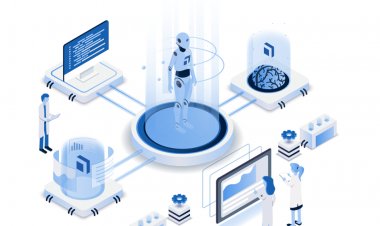Machine Learning
Machine learning is a branch of artificial intelligence that is widely described as a machine's capacity to mimic intelligent human behavior.

Introduction:
Man is always looking for ways to increase productivity while employing fewer human laborers. Today is the ear of the machine. There are several types of machinery that we use in our daily lives to assist us to do our duties more efficiently. Assume you have stored all of your previous company records on your PC. Your computer can learn and adapt by using patterns and algorithms from previous records. Without explicit commands, your computer examines and infers from prior data, predicting future results created on the foundations of existing records. All of this is possible because of machine learning.
What is Machine learning?
It is the use of artificial intelligence that allows the system to learn and improve through the experience without being explicitly programmed. This is fundamentally a system that can learn from data, identify patterns, and make choices with little to no human collaboration.

What is the backstage story of machine learning?
Alan Turing devised the turning test in 1950. Alan Turing was a British mathematician and computer scientist who was both smart and influential. This test was created to determine whether a machine had the intellect of a person.
Who created machine learning?
Many people have contributed to the advancement of machine learning, but Arthur Samuel, a computer scientist at IBM, invented the phrase "machine learning" in 1952.
What is the purpose of Machine learning?
The objective of machine learning is to catch or find patterns in your data and then make estimates based on those patterns, which are characteristically complicated, to answer business issues. Determine and analyses patterns and designs that assist in the resolution of issues.
In business and other sectors, machine learning is essentially a data analysis technology that works by automating the process of generating data models.
How does machine learning work?

How many types of machine learning?
There are for types of machine learning.
Supervised Learning:
In this sort of machine learning, data scientists provide labeled training data to algorithms and specify the variables they want the programmer to look for connections between. The algorithm's input and output are both provided.[1]
Unsupervised learning:
Algorithms that train on unlabeled data are used in this sort of machine learning. The programmer searches for relevant relationships in data sets. The data used to train algorithms, as well as the predictions or recommendations they provide, are predefined.[1]
Semi-supervised:
This method of machine learning combines the two prior methods. Although data scientists may provide an algorithm with largely "training data," the model is allowed to explore the data on its own and establish its own knowledge of the data set.[1]
Reinforcement learning:
Reinforcement learning is generally used by data scientists to teach a machine to execute a multi-step procedure with well-stated criteria. Data scientists train an algorithm to achieve a task and deliver it with optimistic or negative cues as it controls how to finish the job. However, for the most part, the algorithm selects what actions to take along the road.[1]

What advantages does machine learning give?
- Automation of Everything
- Trends and patterns identification
- Wide Range of Applications
- Scope of Improvement
- Efficient Handling of Data
- Best for Education and Online Shopping
What are the disadvantages of machine learning?
- Possibility of High Error
- Algorithm Selection
- Data Acquisition
- Time and Space
Conclusion:
Machine learning is an artificial intelligence subfield. It is a system in which computers utilize a vast quantity of data and use algorithms to "train" themselves and generate predictions without depending on explicit programming. Machine learning is simply a data analysis technique that works by automating the process of developing data models in business and other domains.
- Burns, E.machine learning. Available from: https://www.techtarget.com/searchenterpriseai/definition/machine-learning-ML.

 admin
admin 


























